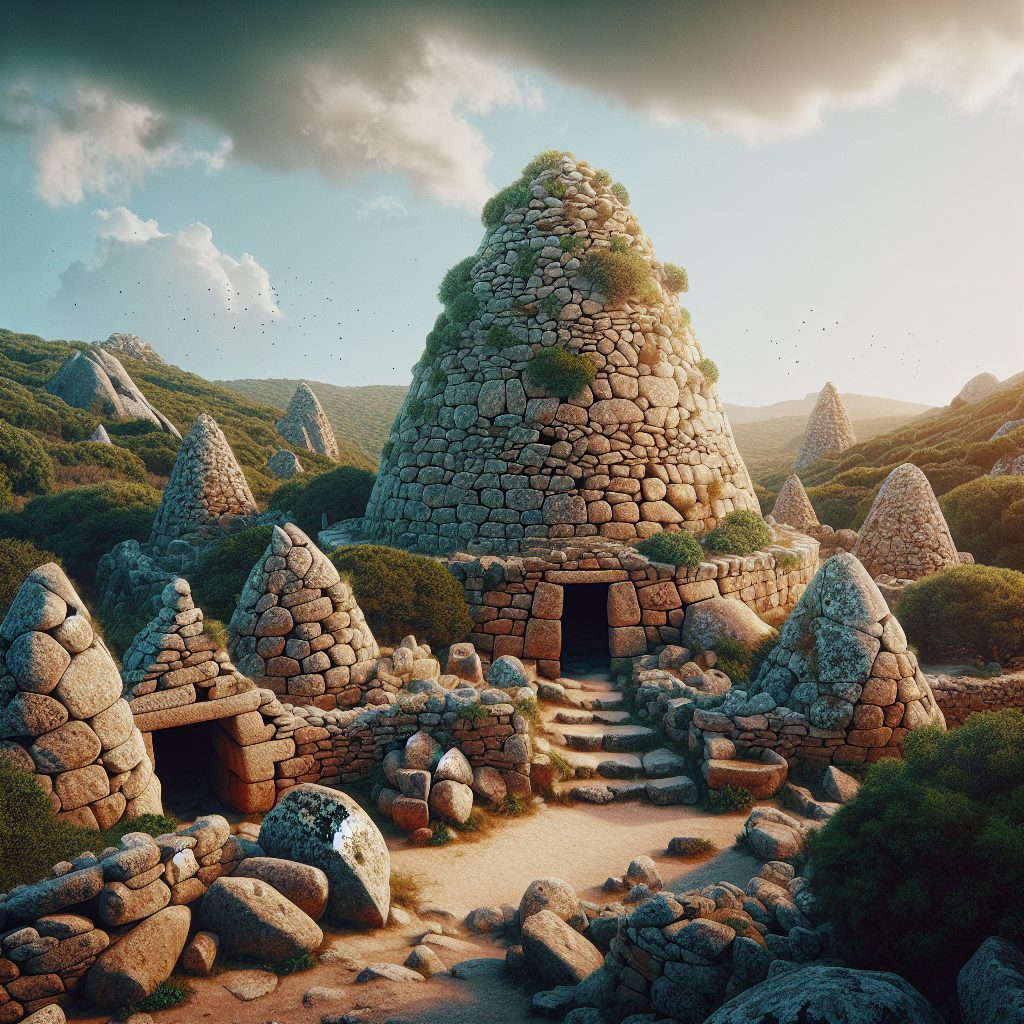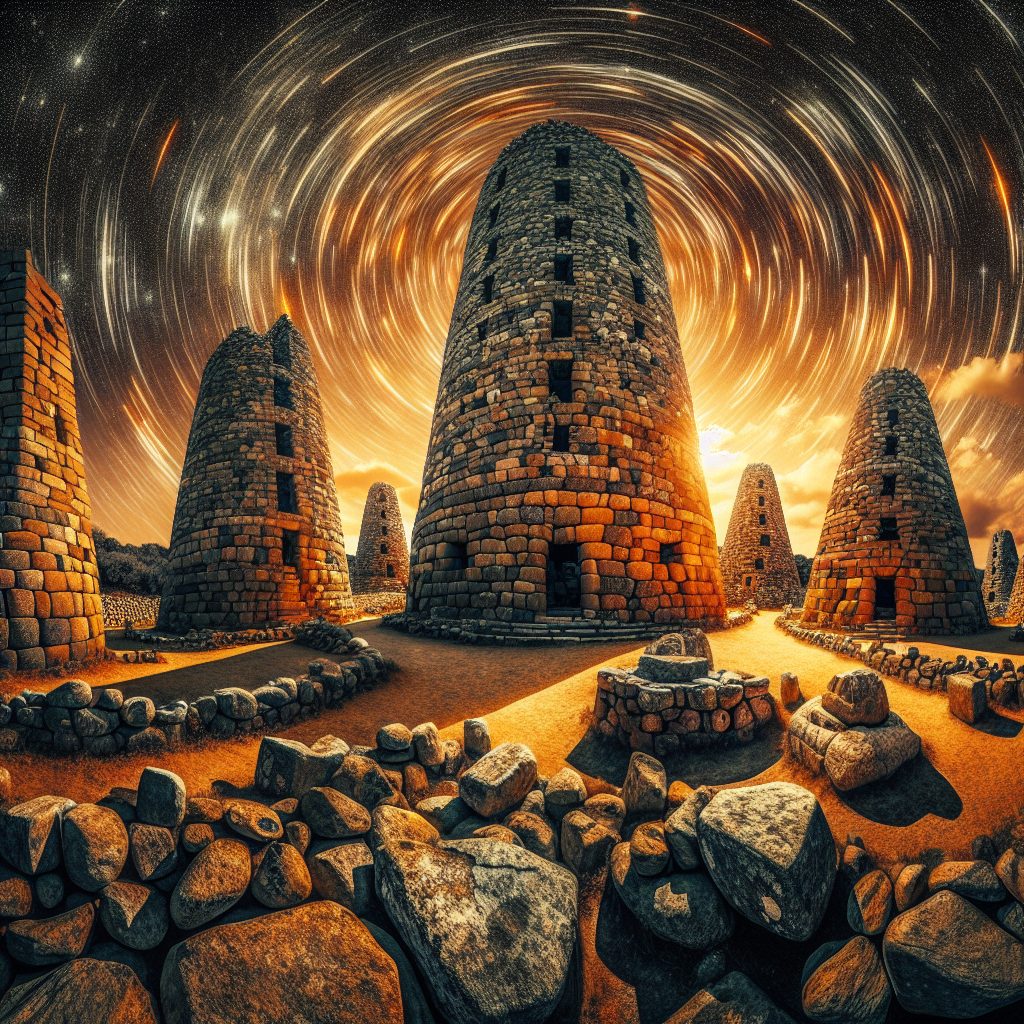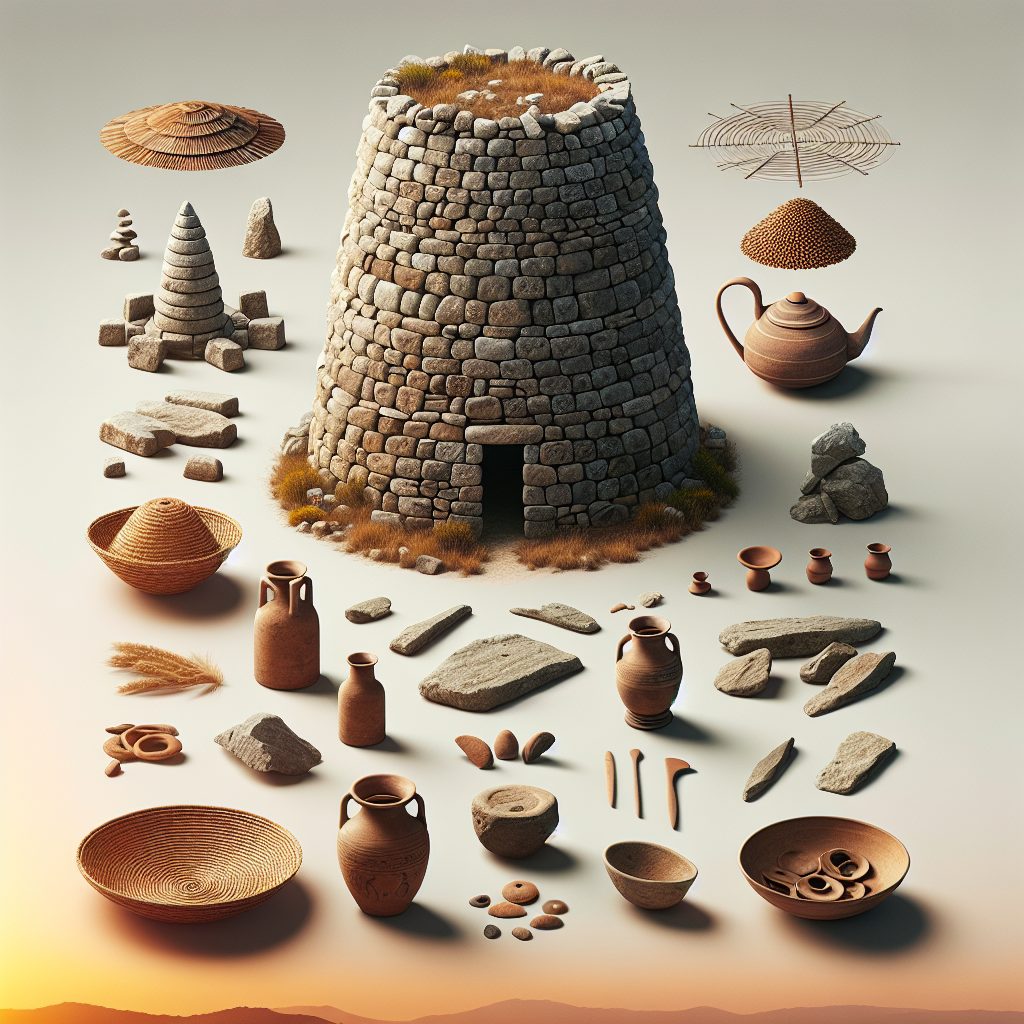Nuraghe: Timeless Stone Structures
Nuraghe, derived from the Sardinian word “nurra,” meaning heap of stones, are ancient megalithic structures that have stood the test of time. These stone towers dot the landscape of the island of Sardinia, showcasing the ingenuity and architectural skills of ancient civilizations. Dating back to the Bronze Age, these imposing structures have not only captivated archaeologists and historians but have also left visitors in awe of their remarkable construction.
What makes the nuraghe truly remarkable is the precise craftsmanship with which they were built. Each nuraghe is a testament to the sheer dedication and skill of their creators. Constructed without the use of any mortar, these multi-story towers were carefully built using large stones that fit together seamlessly. The ingenious design and strategic positioning allowed for easy surveillance and defense. Additionally, some nuraghe feature intricate corbelled roofs, an architectural technique in which stones are stacked in a slightly overlapping fashion, resulting in a self-supporting structure.
In the upcoming sections, we will delve deeper into the key takeaways that make the nuraghe a fascinating subject of study. Through exploring their historical significance, architectural features, and cultural impact, we will uncover the mysteries surrounding these timeless stone structures. So, let us embark on a journey through time to uncover the secrets behind the enduring allure of the nuraghe.
Key Takeaways
1. Nuraghi are ancient stone structures found in the island of Sardinia, Italy, and are considered one of the most important and unique architectural legacies of the Mediterranean Bronze Age.
2. These structures were built between the 18th and 15th centuries BC. They consist of massive stone towers, typically circular or quadrangular, containing multiple floors, sometimes reaching impressive heights.
3. Scholars are still unsure about the original purpose of nuraghi, but they are believed to have served as defensive structures, homes for the nobility, or symbols of power. Some nuraghi even show evidence of having had religious functions.
4. Nuraghi are highly unique in their construction, often utilizing a corbelled technique where stones steadily overlap each other without the use of mortar. This well-engineered technique has allowed many nuraghi to withstand the test of time.
5. Despite their massive presence in Sardinia, nuraghi are still relatively unknown compared to other archaeological sites. To protect these important structures and promote their cultural significance, efforts are being made to preserve and study nuraghi, shedding light on the ancient civilization that built them.
What makes Nuraghe a timeless stone structure?
Introduction
Nuraghe, the iconic stone structures of Sardinia, have stood the test of time, captivating archaeologists and visitors alike. These ancient megalithic buildings are a testament to the advanced engineering skills of the Nuragic civilization. Let’s dive deep into what makes Nuraghe a timeless stone structure.
The Origins of Nuraghe
The Nuragic civilization flourished in Sardinia, Italy, from the Bronze Age to the Iron Age (1800-238 BC). The exact purpose of Nuraghe is still debated, but it is believed they served as defensive structures, religious sites, or even homes for high-ranking individuals. With over 7,000 Nuraghe documented across Sardinia, they are a significant part of the island’s cultural heritage.
Unique Architectural Features
Nuraghe are characterized by their unique architectural features that showcase the mastery of ancient Sardinian builders. These structures typically consist of a central tower (the keep) surrounded by lower towers and walls. The walls are constructed using large, roughly cut stones, also known as Cyclopean masonry, which fit together without the need for mortar.
The Central Keep
The central keep, often the tallest tower, is the focal point of a Nuraghe. It is usually cylindrical or conical in shape, built using layers of stones that decrease in size as they ascend. Some central keeps have internal staircases that lead to upper levels, while others may have a vaulted ceiling.
A Complex Floorplan
Nuraghe feature a complex floorplan, with various chambers connected by narrow corridors. Some structures may have multiple levels, expanding their complexity. The layout includes spaces for storage, living quarters, and even water wells. These intricate designs showcase the advanced planning and organizational skills of the Nuragic people.
Astronomical Alignments
Some Nuraghe are built with precise astronomical alignments, indicating a deep understanding of celestial events by the ancient builders. These alignments suggest a possible connection to rituals or religious practices, emphasizing the importance of astronomy in their culture.
Construction Techniques
The construction techniques employed by the Nuragic civilization are truly remarkable. The stones used in the construction of Nuraghe were carefully selected for their size and shape, ensuring a tight fit between each stone. The absence of mortar and the stability of these structures have enabled them to withstand the test of time.
Building Without Mortar
The absence of mortar in the construction of Nuraghe required intricate stone-cutting techniques. Large stones were shaped to perfectly interlock, providing structural stability. This technique, combined with the use of gravity, allowed the builders to create sturdy walls and towers that have stood for thousands of years.
The Role of the “Master Builder”
The construction of Nuraghe was likely a communal effort, led by a skilled “master builder.” These individuals possessed the knowledge of architecture and engineering required to oversee such complex projects. The expertise of these master builders ensured the success of Nuraghe construction.
Preservation and Restoration Efforts
Preserving and restoring Nuraghe structures is crucial to safeguarding their historical and cultural significance for future generations. Various organizations and archaeological teams are actively involved in studying, documenting, and preserving these structures. Efforts include stabilization of walls, removal of vegetation, and implementing measures to prevent further deterioration.
The Timeless Legacy of Nuraghe
Nuraghe stand as a timeless testament to the advanced skills and ingenuity of the Nuragic civilization. These stone structures not only provide valuable insights into the past but also serve as prominent tourist attractions in Sardinia. Their enigmatic presence continues to spark intrigue, inspiring researchers and visitors to explore the rich history of these ancient stone structures.
Conclusion
In conclusion, Nuraghe are remarkable stone structures that have withstood the test of time. From their origins in the Nuragic civilization to their unique architectural features and construction techniques, these ancient buildings continue to captivate and inspire. Preserving and studying Nuraghe is not only important for historical understanding but also for appreciating the timeless legacy they represent.
Numbered Guides/Tips for Exploring Nuraghe
1. How can I visit Nuraghe structures in Sardinia?
2. Are there guided tours available to learn more about Nuraghe?
3. What should I consider when planning a trip to explore Nuraghe?
4. Are there any restrictions or regulations to be aware of when visiting Nuraghe sites?
5. How can I support the preservation and restoration efforts of Nuraghe structures?
6. What other archaeological sites or attractions are nearby Nuraghe that I should visit?
7. Are there any local legends or myths associated with specific Nuraghe?
8. What research is being conducted to further our understanding of Nuragic civilization?
9. Can I climb to the top of the central keep for a panoramic view from Nuraghe?
10. Are there any exhibitions or museums that display artifacts from Nuraghe?
Frequently Asked Questions
1. What are Nuraghe structures?
Nuraghe structures are ancient stone towers found on the island of Sardinia, Italy. These structures were built by the Nuragic civilization during the Bronze Age and are characterized by their unique cone or tower shape.
2. How were Nuraghe structures built?
Nuraghe structures were built using large stones without the use of mortar. The stones were carefully arranged to create a sturdy and durable construction, often reaching impressive heights.
3. What was the purpose of Nuraghe structures?
The exact purpose of Nuraghe structures is still debated among archaeologists and historians. However, they are believed to have served as defensive structures, religious sites, or even dwellings for important individuals.
4. How many Nuraghe structures are there?
It is estimated that there are over 7,000 Nuraghe structures scattered throughout Sardinia. Some are small and isolated, while others are part of larger archaeological complexes.
5. Can visitors explore Nuraghe structures?
Yes, many Nuraghe structures are open to the public and can be explored. Some have been restored to their original state, while others may require more caution due to their age and condition.
6. Are Nuraghe structures UNESCO World Heritage sites?
Yes, in 1997, Nuraghe structures were collectively designated as a UNESCO World Heritage site due to their historical and cultural significance.
7. How old are Nuraghe structures?
Nuraghe structures date back to the Bronze Age, which is roughly between 1800 and 900 BCE. This makes them around 3,000 to 4,000 years old.
8. Can I climb to the top of a Nuraghe structure?
While some Nuraghe structures may allow visitors to climb to the top, it is important to follow any safety guidelines and restrictions in place. The height and condition of each structure can vary, so caution should be exercised.
9. What is the significance of Nuraghe structures today?
Nuraghe structures are a testament to the advanced building techniques and skills of the Nuragic civilization. They also serve as a reminder of Sardinia’s rich history and cultural heritage.
10. Are there any famous Nuraghe structures?
Yes, some of the most famous Nuraghe structures include Nuraghe Su Nuraxi, Nuraghe Losa, and Nuraghe Santu Antine. These sites attract numerous tourists due to their well-preserved condition and historical importance.
Final Thoughts on Nuraghe: Timeless Stone Structures
Exploring the ancient Nuraghe structures is like stepping back in time. These fascinating stone towers offer glimpses into the lives and achievements of an ancient civilization. From their mysterious origins to their various functions, Nuraghe structures continue to captivate archaeologists, historians, and curious visitors alike.
When visiting Sardinia, taking the time to explore these timeless stone structures is a must. Standing amidst the remnants of a civilization long gone, one can’t help but marvel at the ingenuity and craftsmanship of the Nuragic people. Nuraghe structures truly are a testament to human ingenuity and the enduring power of stone.






